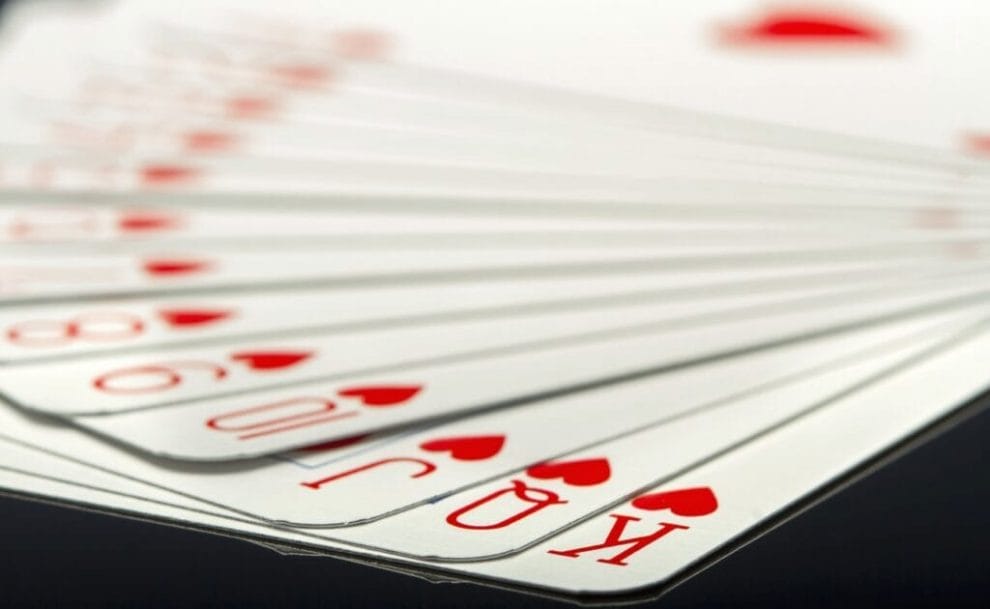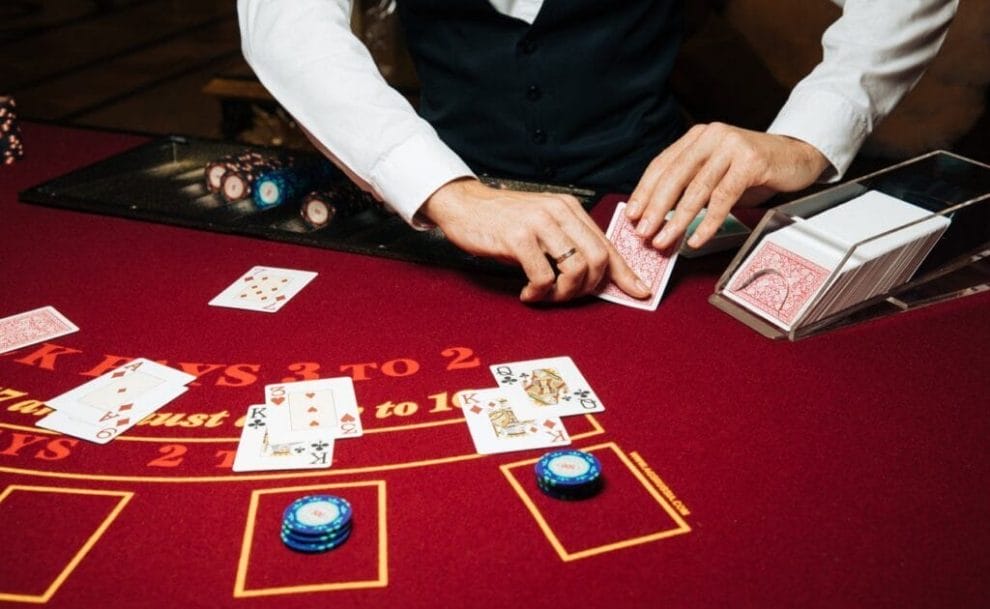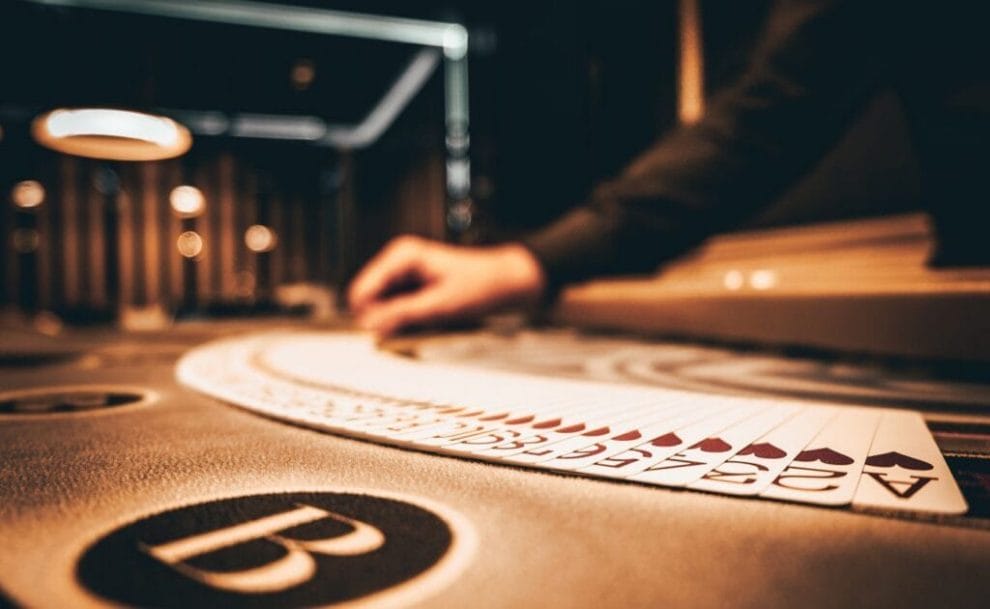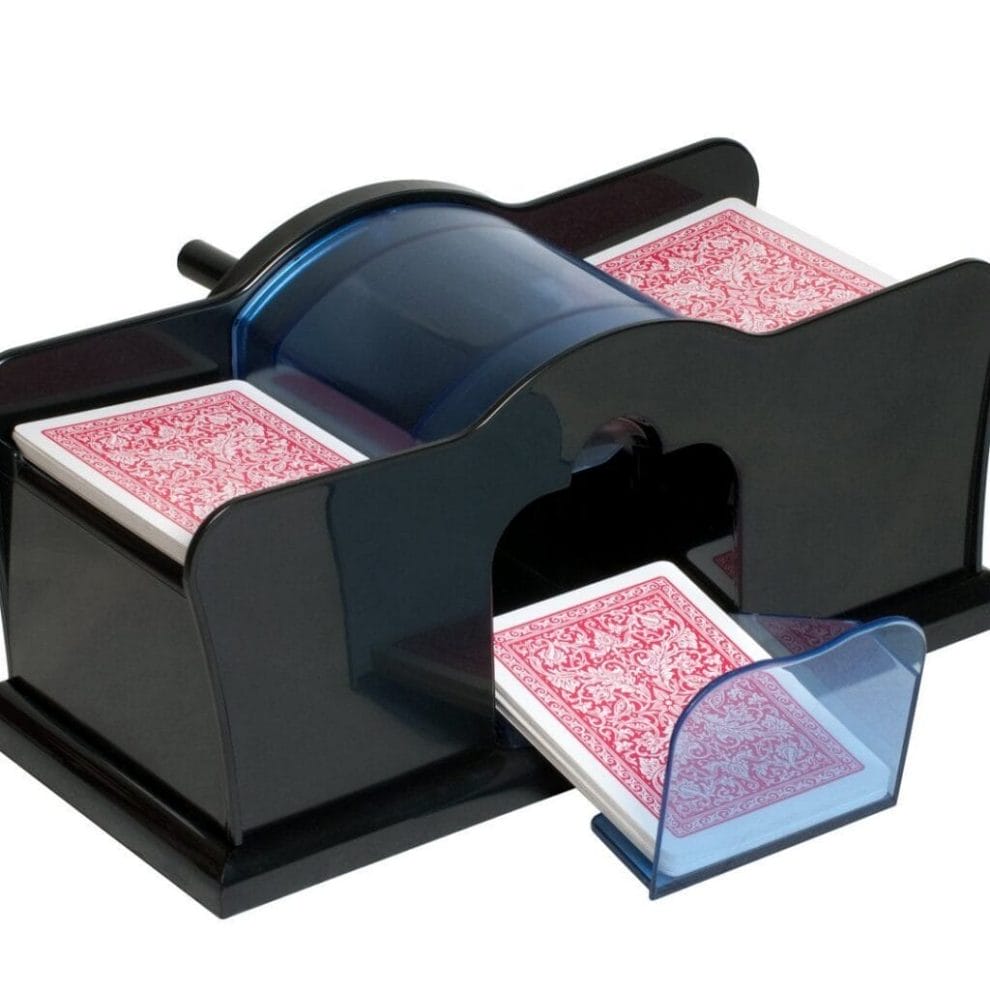
In the pursuit of ever-increasing efficiency and profits, casinos have looked for ways to get players into their favorite games faster and faster. One way of achieving this has been to switch to digital casino games, with card games like online poker and online blackjack becoming increasingly popular year after year. In land-based casinos, where players prefer a more human touch, dealers have switched to hyper-efficient card shuffling machines to ensure that games run smoothly, efficiently, and fairly.
In this blog, you’ll learn about card shuffling machines, how they work, a brief history of their development, and finally, how they’ve changed the casino industry.
What is a Shuffler?
Before you learn about card shuffling machines, it’s important to know what people did before they were invented. Traditionally, a shuffler is a person who shuffles cards in any card game. The purpose of shuffling is to mix up the cards so that they’re in a random order in the deck. This adds the element of chance to card games and makes them exciting to play.
While a shuffler will most likely be a person in casual card games, as previously mentioned, many casinos with card games make use of these machines.
What is a Card Shuffling Machine?
Simply put, a card shuffling machine, or a card shuffler, is a machine that shuffles cards. It’s a more efficient, fair, and, more importantly, more secure way to shuffle cards. While security may not be something most casual card players worry about, ensuring a game is secure and fair is a significant concern for casinos and other gambling companies. For example, a player may be tempted to bribe a human dealer to shuffle the cards in a specific way, but they can’t bribe a poker card shuffling machine.
How Does a Card Shuffler Work?
There are two main types of card shuffling machines: automatic shufflers and manual shufflers.
Both machines will shuffle cards for you using a series of cogs and wheels or mechanical pressure, but an automatic shuffler does this using a motorized system that’s usually battery-powered. In contrast, the manual shuffler uses a hand crank. The electric automatic shuffler may be far less effort to use, but it does have a higher risk of damaging a card since many of these devices don’t know when a card is out of place. On the other hand, a manual shuffler requires a person to turn a crank to shuffle the cards, which may require more effort but also means that shuffling can be stopped immediately if something goes wrong.
You can also get shufflers that can shuffle one or multiple decks. While you probably won’t need a multiple-deck shuffler at home, casinos often use multiple decks in games like blackjack to prevent highly skilled players from counting cards and using shuffle tracking to gain an edge on the house and increase their chances of winning.

While some basic shufflers have been pulled apart by tinkerers and videos of older card shuffling machines have leaked online, when it comes to the inner workings of the best machines, the engineers are intentionally vague about the systems driving these devices. They also go to great lengths to make it difficult for users to figure out how they work. This prevents individuals from working out whether there are any ways to exploit these machines.
That said, users on Reddit have reviewed some of the patents behind these machines, with one user discovering how one machine has 54 slots for each of the 52 cards and how a random number generator (RNG) shuffles the cards randomly according to their position in these slots. A video on the Vital Vegas YouTube channel titled “Rare Look Inside a Casino Automatic Card Shuffler” seems to demonstrate a card shuffler very similar to this in operation. Another device actually reads the cards using cameras and uses RNG to ensure the cards are randomly shuffled.
Unfortunately, that’s all the detail available of the inner workings of these devices. Although, there have been instances of patterns in casino shuffling machines being discovered. On his blog site, Bruce Schneier, a technologist and lecturer at Harvard’s Kennedy School, briefly discusses two cases where this occurred. In his article “On the Randomness of Automatic Card Shufflers,” he looks at how hackers got a hidden camera to record a casino shuffling machine to play back the video in slow motion and figure out in what sequence it shuffled the cards. In another case, two statisticians were assessing a prototype of a new shuffling machine when they discovered a rising and falling shuffling sequence — this made it possible for them to predict the order of the cards.
To prevent this kind of information from leaking to the public, developers of the best card shuffling machines will likely be quite hush-hush about how their machines work.
A History of Card Shufflers
As fantastic as these card shuffling devices are, just like any other machine, they have evolved over time. As these machines were being developed, people were hard at work on the mathematical theory that would make such a machine perfect.
The study “Analysis of Casino Shelf Shuffling Machines” by Diaconis, Fulman, and Holmes discusses the in-depth mathematical theory that went into ensuring that when a card shuffler worked, the deck of cards would be truly randomized. Mathematician Andrey Markov began working on the theory behind this problem in 1906, followed by many other mathematicians, including Henri Poincaré, Emile Borel, Paul Levy, Edgar Gilbert, and Claude Shannon.

However, a lack of complicated mathematical theory didn’t stop many inventors from trying to develop card shuffling machines on their own. The Wikipedia page for the shuffling machine describes how tinkerers and engineers began to develop these machines in the late 1800s. One of the first of these was created in 1878 by Henry Ash. It worked by shaking a box that caused cards to fall through a comb that separated them into two compartments. Add the cards from one compartment to the other, and you have a shuffled deck.
This was followed up by various other mechanical devices over the years, with inventors working to create more efficient systems for shuffling cards. William H. Ranney created a machine in 1892 that relied on gravity and friction to shuffle cards. Turning a lever would slowly move the bottom of a box, causing groups of cards to fall at different rates and “shuffling” the cards.
Another example is a machine Charles and William Gunzelmann created in 1925 — a rhombus-shaped device where cards would fall from an upper compartment into a lower compartment when you shook the device. After this, two small “wings” would distribute the cards to players. The device could be flipped and shaken as necessary to shuffle more cards.
However, despite the advancements made, there were still various problems associated with mechanical card shufflers. One of the most significant issues was randomizing how cards were shuffled. It wouldn’t be until 1969 that Thomas Segers would create a patent for an electronic card dealer, and even then, this device didn’t work with actual playing cards. Instead, it was a simulation of how such a device could work. It wasn’t until 1974 that inventors David Erickson and Richard Kronmal took Segers’ ideas and built the first computerized shuffler. This device automatically moved cards stored in a compartment down a channel, where flaps that operated using a pseudo-random generator would randomly shift the cards onto a stack.
According to the Wikipedia article, there weren’t many innovations in card shuffling machines until 1985, when Edward Sammsel decided to add a second compartment and an additional device that ejected cards that were needed by the dealer.
Since then, more advanced machines have been developed, but as previously discussed, the inventors of these machines have tried to keep their card shuffling systems as secret as possible to avoid players figuring out how to exploit these devices.
The Impact of the Card Shuffler on Casinos

There are multiple reasons why a casino has a shuffling machine at every card game table.
The first benefit of shuffling machines for casinos is one already mentioned in this blog: a machine card shuffler can’t be swayed to make the cards fall in a certain way for a player. Casinos have also changed to shufflers because they allow the dealer to get through games quicker, which is more exciting for gamblers and boosts the casino’s profits. Finally, a machine is far less likely to make a mistake when shuffling and either damage or drop the cards.
Sadly, this means that if you enjoyed the artistry and show that came with shuffling cards, you won’t find it at most casinos. Today, you’ll only see it done by magicians, illusionists, and YouTubers. This is a trend in gambling that will unfortunately only become more common as time goes by.
Enjoy Your Favorite Card Games and More Online at Borgata Online
If you’re interested in getting into the gambling action as quickly as possible without having to worry about shuffling cards, it’s time to play at an online casino like Borgata Online. Borgata Online has an extensive library of exciting card games, including baccarat, blackjack, and online poker. Whether you’re a casual poker fan or a more competitive player, you can find both exciting cash games and poker tournaments at this online casino.
And if you like to have fun playing more than just card games, Borgata Online also has many other exciting gambling experiences, including online slots, roulette, variety games, virtual sports, and more.
Register at Borgata Online to start playing your favorite gambling games.
